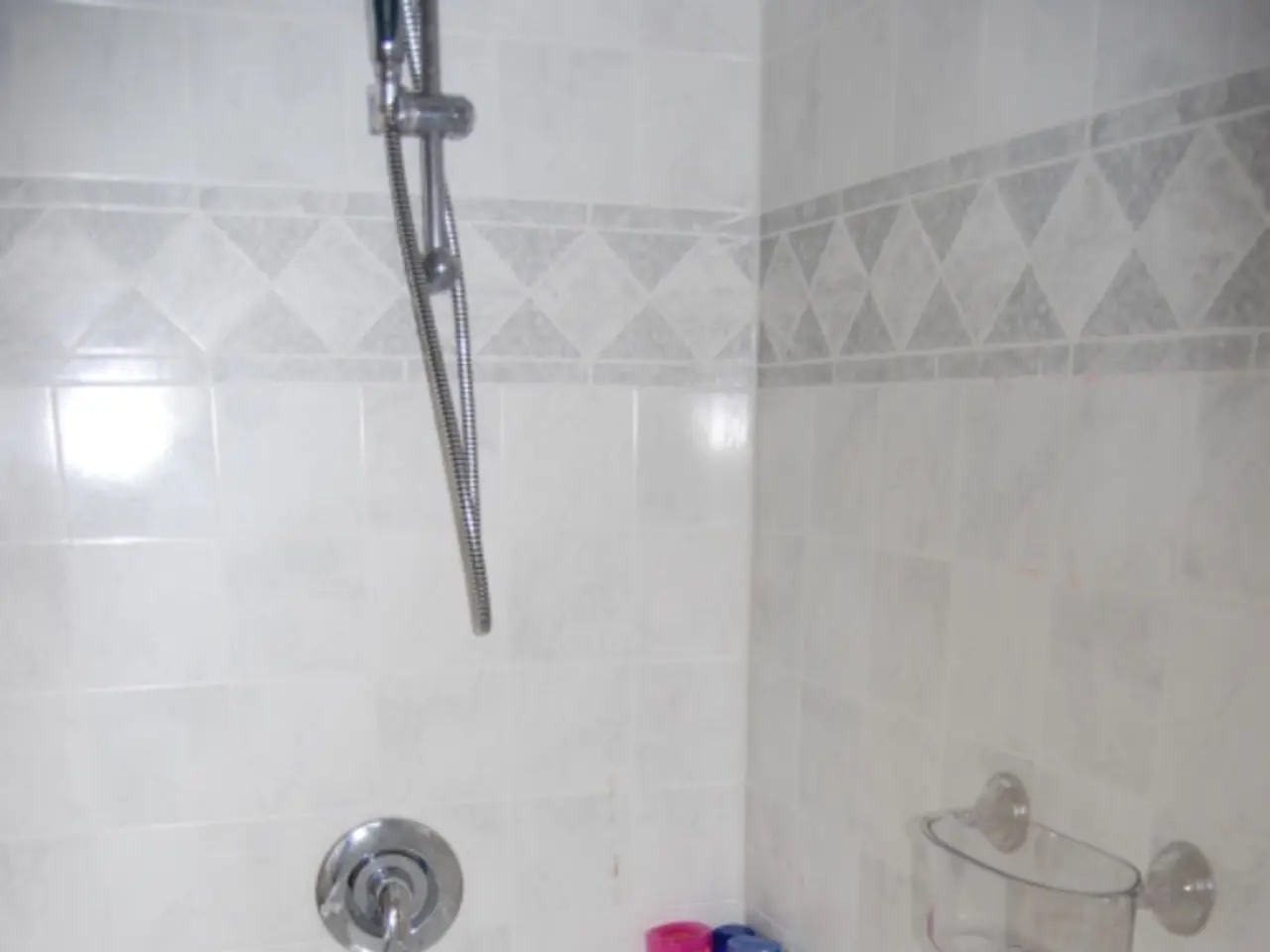Distinguishing Between Bathroom Tiles for Your Remodel: A Crucial Difference Between Floor and Wall Tiles Worth Noting Before Purchase
When it comes to designing a bathroom, choosing the right tiles can make all the difference. The key differences between bathroom wall tiles and floor tiles primarily revolve around durability, slip resistance, and maintenance requirements.
Durability
Floor tiles, due to their exposure to foot traffic, impact, and wear, need to be more durable than wall tiles. Porcelain tiles, known for their density and robustness, are often the go-to choice for floor tiles. Wall tiles, on the other hand, primarily need to resist moisture and staining without bearing weight. They can be ceramic or porcelain but are usually less thick and less wear-resistant than floor tiles.
Slip Resistance
Enhanced slip resistance is crucial for floor tiles because they are walked on and often get wet. Tiles with a matte finish, textured surface, or smaller shapes (such as small penny-round ceramic tiles) have better grip and are preferred for floors. Wall tiles can have glazed or glossy finishes, which are visually appealing but slippery and thus unsuitable for floors.
Water Absorption and Maintenance
Both wall and floor tiles for bathrooms should have low water absorption to prevent moisture damage. Porcelain is particularly prized for both walls and floors because it has very low porosity (less than 0.5%) and resists stains and scratches, which simplifies maintenance. Ceramic wall tiles are popular for their affordability and easy cleaning, especially in shower walls or kid-friendly bathrooms, but may require more care if used on floors.
Best Tile Options for Bathroom Walls
Ceramic tiles, especially glazed or glossy, are excellent for walls due to their easy cleaning and design versatility. Porcelain tiles are also suitable and very durable, especially in wet areas. Choose styles and finishes that add visual interest since wall tiles don’t require slip resistance.
Best Tile Options for Bathroom Floors
Porcelain tiles are the best choice for bathroom floors because they are durable, water-resistant, and available with textured finishes for slip resistance. Anti-slip ceramic tiles can work but are less durable than porcelain for wet, high-traffic areas. Avoid very glossy or smooth tiles on floors to reduce slip risk.
In summary, floor tiles in bathrooms prioritize strength and slip resistance, while wall tiles emphasize water resistance and appearance. Porcelain is the preferred material for floors due to its robustness and low maintenance, while ceramic is frequent for walls for style and affordability but can be combined with porcelain floors for a practical and attractive bathroom design.
María D. Arraez, the UK representative for Tile of Spain, advises checking the weight of large-format wall tiles to ensure they’re not too heavy for the walls. It’s generally not advisable to use bathroom wall tiles on the floor, but the reverse can be possible if the tile is not too heavy. R13 tiles offer the best slip resistance and work well in wet environments like bathrooms and wet rooms.
Leo Wood, the founder of Kinder Design, suggests leaning into bolder choices for smaller bathrooms, as they can afford to be more expressive. Encaustic tiles, with their matte, tactile surface finish and artisan feel, can be used across both floors and walls and are appreciated for their versatility.
Claire Garner, the founder and director of Claire Garner Interior Design Studio, emphasizes the importance of tripling-checking the manufacturer’s guidelines regarding the slip rating, water resistance, and weight before making a purchase. Lee Thornley from Bert and May suggests using patterned tiles to create a bold look or a mural-like effect on bathroom walls.
- In terms of lifestyle, choosing the right bathroom tiles can significantly influence the overall design and feel of a space.
- For flooring, porcelain tiles are often the preferred choice due to their robustness and slip resistance, making them suitable for high-traffic, wet areas.
- Artful elements, such as encaustic tiles, can add visual interest to both walls and floors in smaller bathrooms, enhancing the fashion-and-beauty aspect.
- When it comes to interior design, wall tiles should be water resistant and not necessarily slip resistant, allowing for more color and texture options.
- Porcelain tiles are also suitable for bathroom walls, especially in wet areas, thanks to their durability and low water absorption, aligning with home-and-garden trends.
- In the realm of shopping, it's crucial to consult the manufacturer's guidelines before purchasing bathroom tiles, ensuring they meet the necessary slip ratings, water resistance, and weight requirements.
- Travel tips often include considering the weight of large-format wall tiles to avoid overloading walls, and understanding that using bathroom wall tiles on the floor might be possible if the tile is not too heavy.






